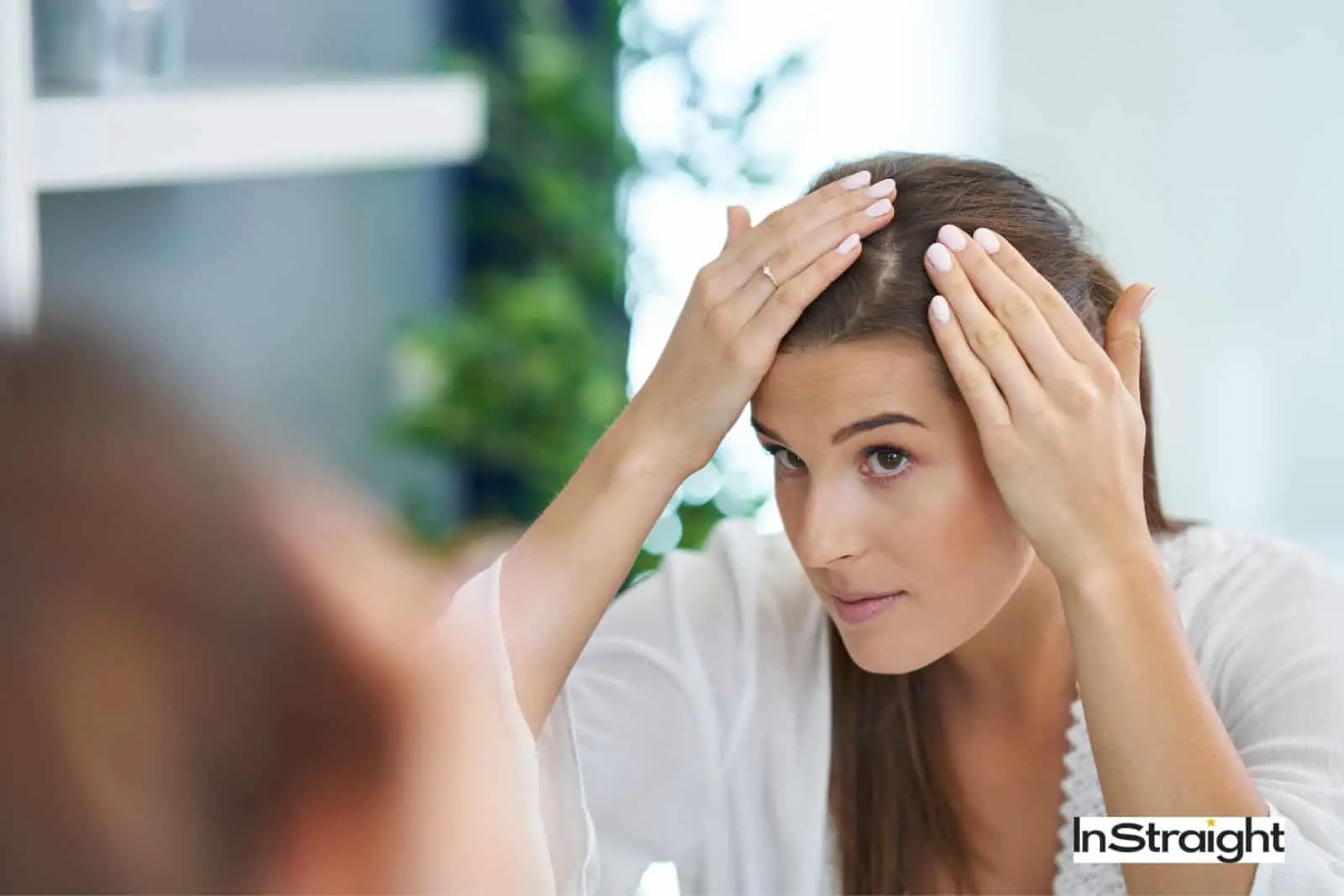Are you wondering, “How do I know if my scalp is damaged?”
A couple of years ago, I struggled with hair loss and dry scalp, so I spent a lot of time researching and talking to professionals.
And today, I’ll share my experience with you and help you get your scalp healthy.
Just keep reading.
CHECK: How to Know if Your Hair is Damaged?
8 Signs You’ve Got a Damaged Scalp
Before I talk about how to tell if you have a damaged scalp, let me explain why having healthy scalp matters so much.
As Dr. Iris Rubin, a dermatologist, explains, “A healthy scalp is important to promote optimal hair health.” A damaged scalp can impair hair growth, damage the hair follicles, and lead to baldness. (1)
How do I know if my scalp is damaged? Here are eight common symptoms to watch out for!
#1 Dandruff
Do you know how common dandruff is? According to studies, as many as 50% of the population has had dandruff. (2)
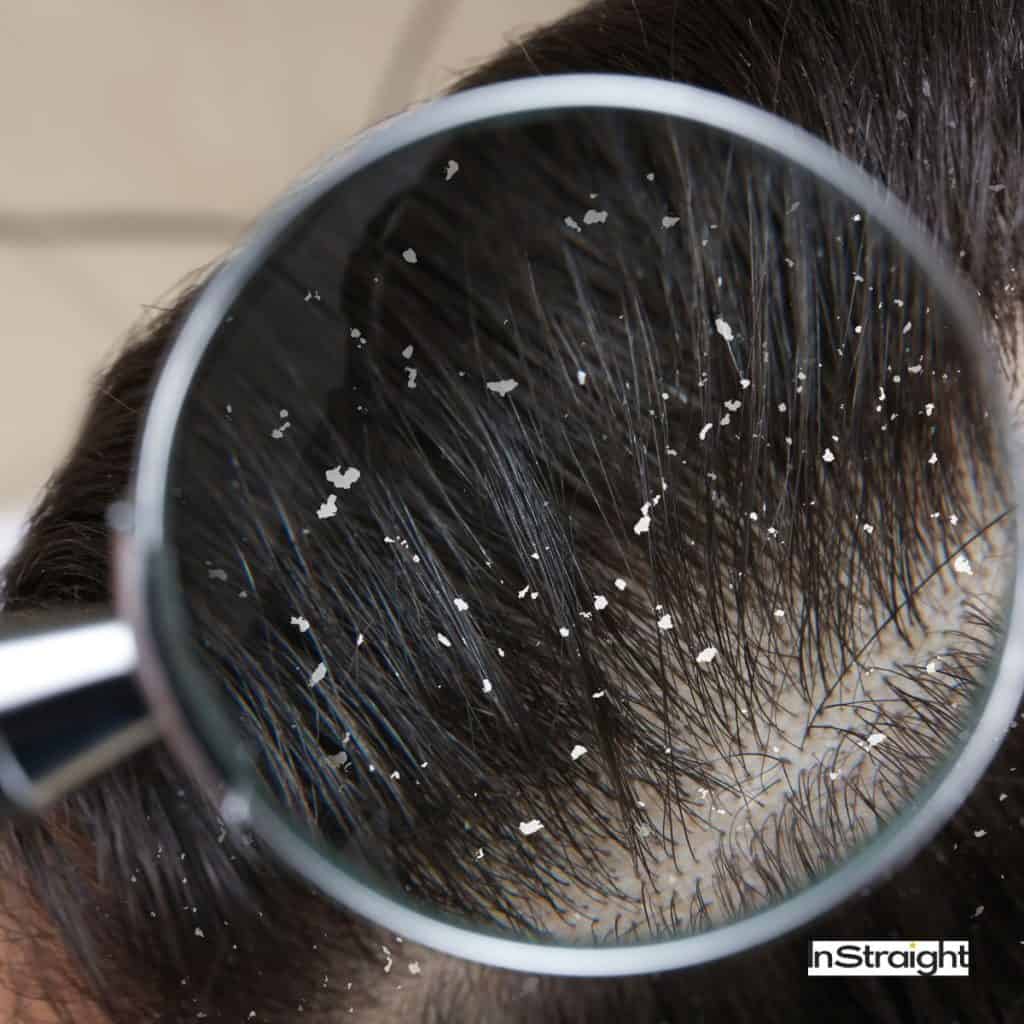
In most cases, dandruff isn’t severe, but the flaking of dead skin cells and itching can cause discomfort and embarrassment. And they tell you that something is going on with your scalp.
Usually, dandruff is caused by seborrheic dermatitis, a skin condition resulting from excessive oil production and yeast overgrowth that trigger the immune response. (3)
In severe cases, thick-crusted patches appear on the scalp, yellow and greasy. It’s possible to develop a secondary bacterial infection, so it’s not something to ignore.
#2 Dry Scalp
When scalp skin loses too much moisture or the sebaceous glands fail to produce enough oil, you may notice that your scalp is dry.
Something clogging the hair follicles, such as sweat, can also prevent the natural secretion of sebum oil and cause itchiness and flaking skin.
However, dry scalp can also result from eczema (redness, itchiness, and cracked skin) or psoriasis (excess buildup of dead skin cells, creating scaly patches).
So, if your scalp is too dry out of a sudden, it’s worth checking it out with your dermatologist or hairstylist. And watch his video to see the difference between dry scalp and dandruff.
#3 Oily scalp
I struggled with oily hair and oily scalp for most of my adolescence due to overwashing, hormonal problems, and the wrong hair products.
While sebum oil protects your locks and provides the necessary moisture to prevent dry hair, too much can indicate a problem.
Excess oil leads to scalp buildup (dirt, bacteria, and dandruff), which can clog pores, impair growth, and cause hair loss.
Check this video to see the difference between dry, oily, and normal scalp.
#4 Scalp Redness and Itching
Itchy scalp and redness are clear signs that your scalp is in trouble. And many scalp conditions can cause these symptoms:
- Allergic reactions to new hair care products
- Sunburn
- Scalp parasites, such as lice
- Scabies
- Fungal infections, such as ringworm (tinea capitis)
- Atopic dermatitis
- Psoriasis
READ MORE: How to Straighten Hair Without Straightener?
#5 Bumps
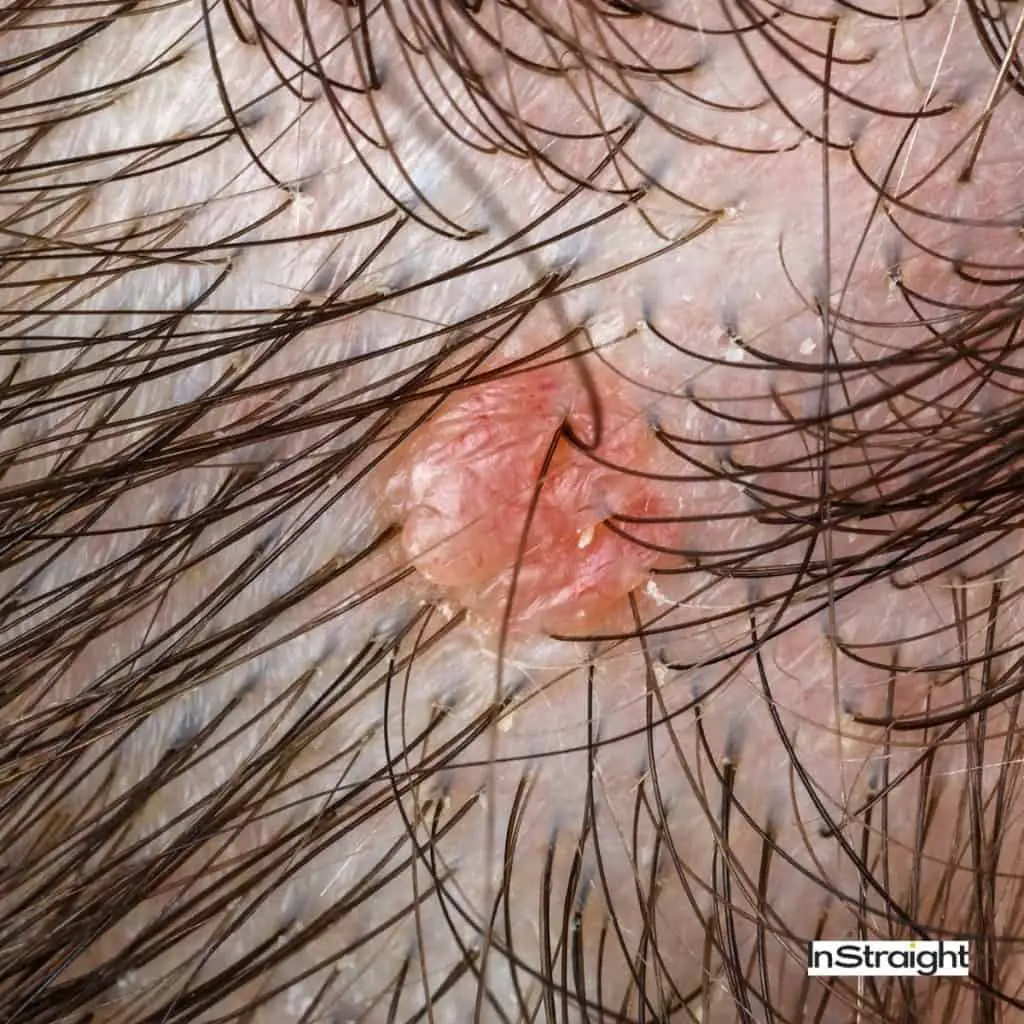
Have you ever scratched your scalp only to discover a bump? Well, an inflammation of the hair follicles leads to the development of small pus-filled spots, similar to acne.
Usually, folliculitis appears due to damaged hair follicles (from scratching, tugging, etc.), which allow bacteria or fungi to infect the follicles.
Don’t confuse folliculitis with razor bumps. These bumps are due to ingrown hair, not scalp infections (bacterial or fungal infections).
#6 Unusual Patches of Skin
Red, scaly, or bald patches aren’t the signs of a healthy scalp. Usually, psoriasis or ringworm are the main culprits for their appearance.
Other inflammatory skin conditions can also cause unusual patches on your scalp. You should consult your dermatologist to find the cause.
#7 Sensitive Scalp
It’s not normal for your scalp to be overly sensitive. Sudden tenderness or scalp skin damage indicates something is going on – from common skin conditions to lice infestations to heat damage.
#8 Excessive Shedding
According to the American Academy of Dermatology Association, “It’s normal to shed between 50 and 100 hairs a day.” (4)
Excess shedding shows that something is wrong not only with your scalp but also with your body. It can be stress, fever, recovering from an illness, or medication.
Shedding is different from hair loss.
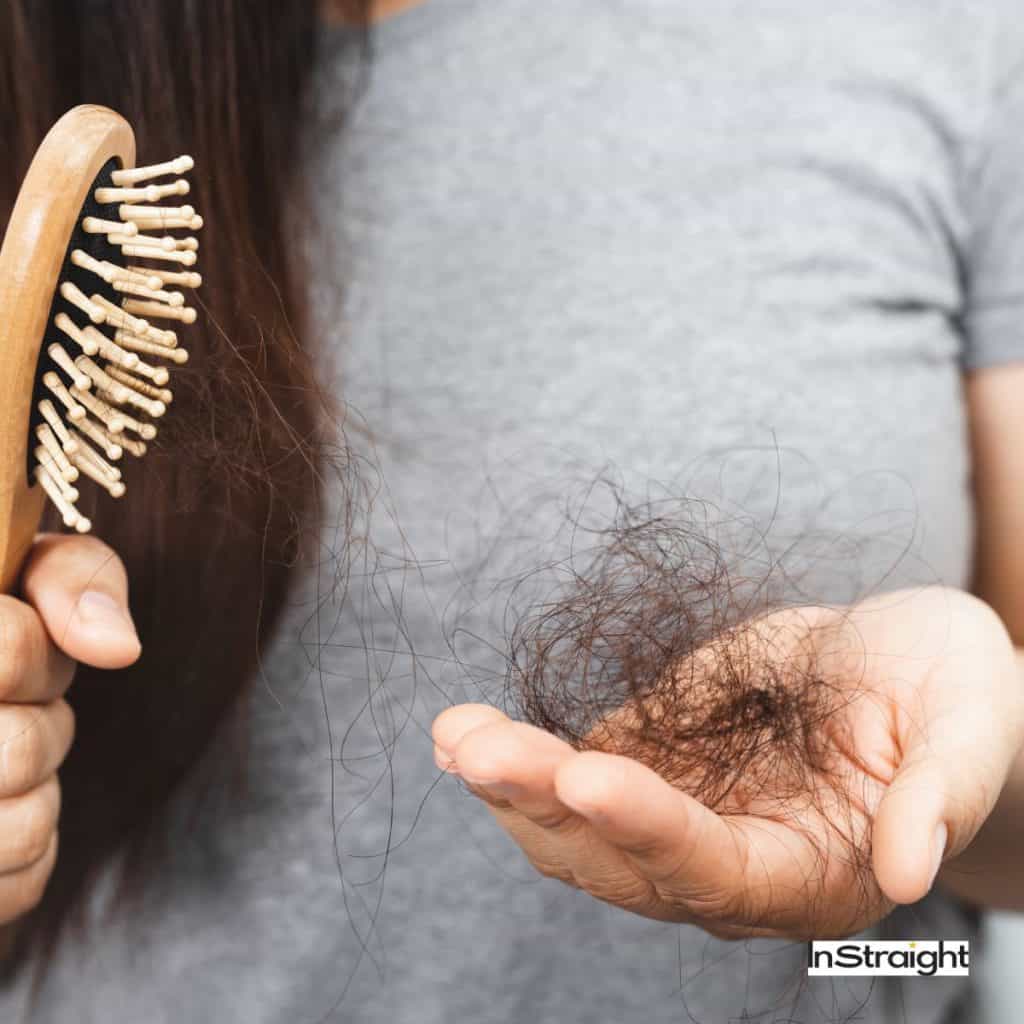
Have you ever scratched your scalp only to discover a bump? Well, an inflammation of the hair follicles leads to the development of small pus-filled spots, similar to acne.
And now, let’s talk about how I prevent my scalp from getting damaged.
7 Tips on How to Prevent Scalp Damage
Preventing scalp damage is easy as long as you follow some simple care tips to keep your hair follicles healthy and take care of underlying medical conditions on time.
#1 Avoid Overwashing
Washing your hair often strips the scalp of natural oils and can make your locks dry and brittle. Also, hot water is bad for the scalp because it opens the pores and can weaken the hair roots.
So, it’s better to wash your hair once or twice a week and rinse it with cold water to seal the hair cuticle layer to keep it hydrated.
#2 Switch Shampoos
Shampoos with harsh chemicals and sulfates can irritate the scalp and cause itchiness.
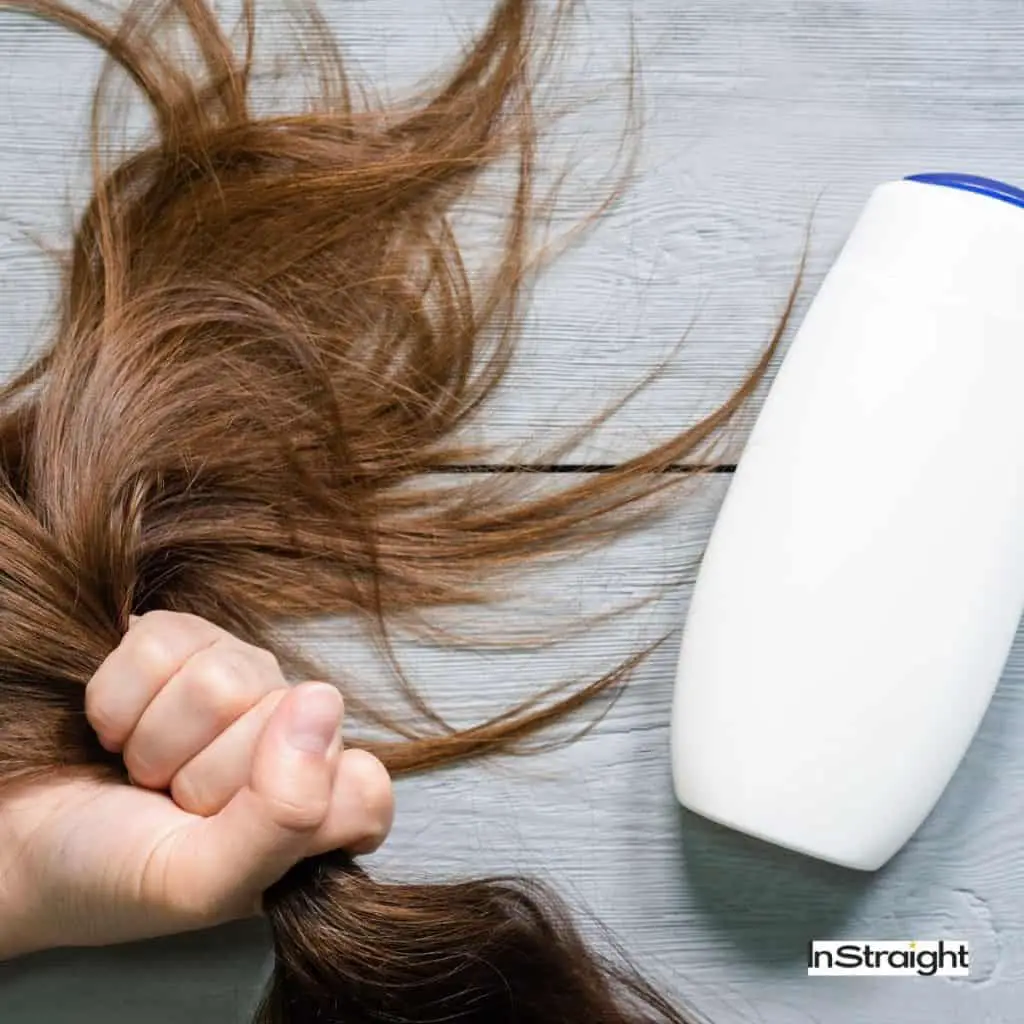
Switch to a shampoo suitable for your hair type with natural ingredients to promote hair growth.
#3 Scalp Massage
Exfoliating your scalp when washing removes the buildup of dead skin cells, dirt, and bacteria. It reduces the chances of clogged pores and scalp irritation/dryness.
#4 Don’t Use Harsh Hair Products
Avoid products with harsh chemicals, especially if you have sensitive skin or allergies. And be careful if you use keratin straighteners because the heat can damage your scalp or dry your hair.
#5 Moisturize Your Scalp
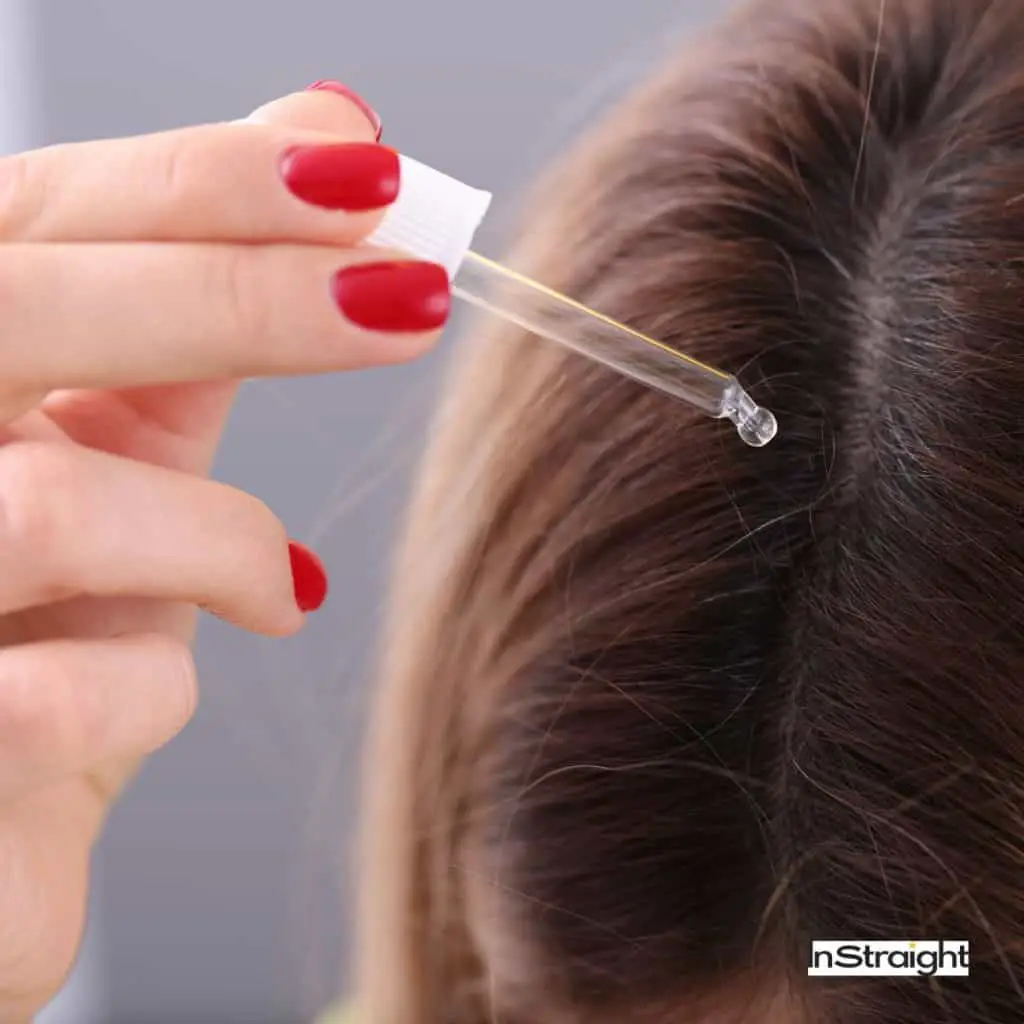
If you have a dry scalp, use appropriate moisturizing products to keep it hydrated and prevent the skin from flaking.
#6 Use Sunscreen
In the past, when I had thin hair on the scalp, I used to get scalp sunburns, and then my skin would redden and blister.
To avoid sun damage, always apply sunscreen because it creates a protective layer against intense sun rays.
#7 Go to a Dermatologist
Whenever you notice strange bumps, patches, or itchiness that doesn’t go away, it’s best to talk to a dermatologist. Left untreated, scalp infections can wreak havoc on your looks.
FAQs
What Causes Scalp Damage?
Fungal infections, harsh hair products, allergic reactions, folliculitis, and psoriasis can cause scalp damage.
What Color Is a Healthy Scalp?
A healthy scalp should be white. Yellow indicates an overproduction of sebum oil, while red points to inflammation.
How Do I Make My Scalp Healthier?
Avoid harsh products, wash less often, and apply moisturizing masks to keep the scalp healthy and remove skin buildup.
Conclusion
How do I know if my scalp is damaged? Itchiness, dryness, oily skin, and dandruff are the most common signs of an unhealthy scalp.
It’s essential to discover the root of the problem, so you can reverse the damage and protect your beautiful locks from breakage.
What do you think about this topic? How do you know your scalp is damaged? Share your experience in the comment section.
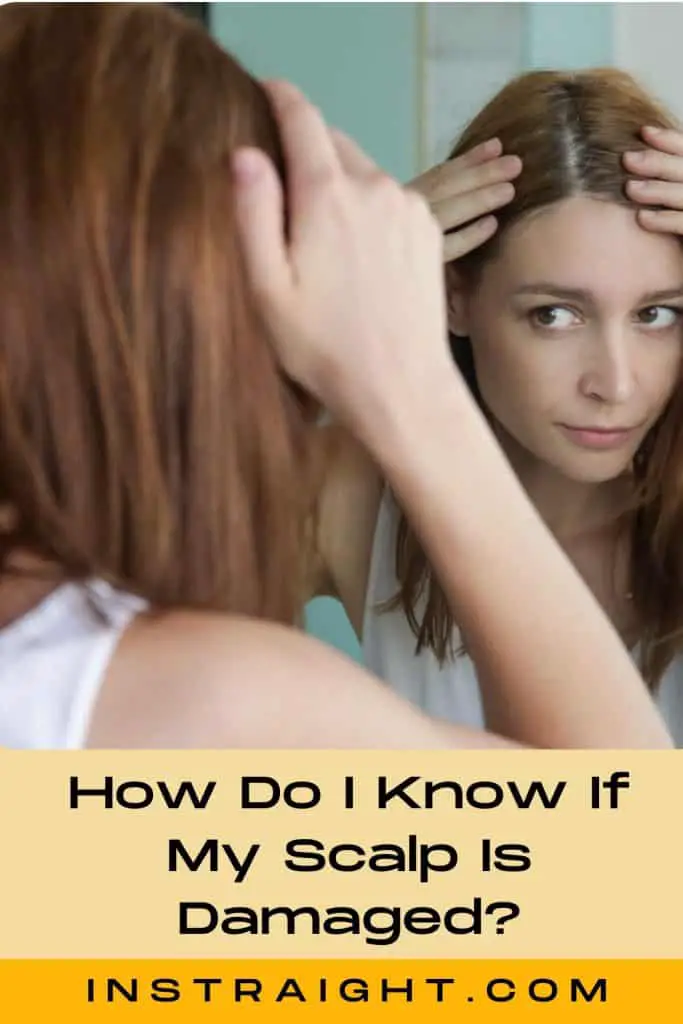
Resources:
- 1. Healthy Hair Vs Unhealthy Hair | Finding reliable health information. www.medusafe.org. Accessed September 13, 2022. https://www.medusafe.org/?healthy-hair-vs-unhealthy-hair/
- 2. Nowicki R. [Modern management of dandruff]. Polski Merkuriusz Lekarski: Organ Polskiego Towarzystwa Lekarskiego. 2006;20(115):121-124. https://pubmed.ncbi.nlm.nih.gov/16617752/
- 3. Seborrheic Dermatitis: On Scalp, Treatment, Crib Cap, and More. Healthline. Published May 31, 2022. Accessed September 13, 2022. https://www.healthline.com/health/skin/seborrheic-dermatitis#on-the-scalp
- 4. Do you have hair loss or hair shedding? www.aad.org. https://www.aad.org/public/diseases/hair-loss/insider/shedding
- About the Author
- Latest Posts
I’m just a girl who likes to review everything. I have a sensitive and very dry skin type. Miss Nail Art 2014! Loves makeup & skincare. Read her Latest Articles
Find her on
YOUTUBE AND Instagram. Learn more about her HERE.
